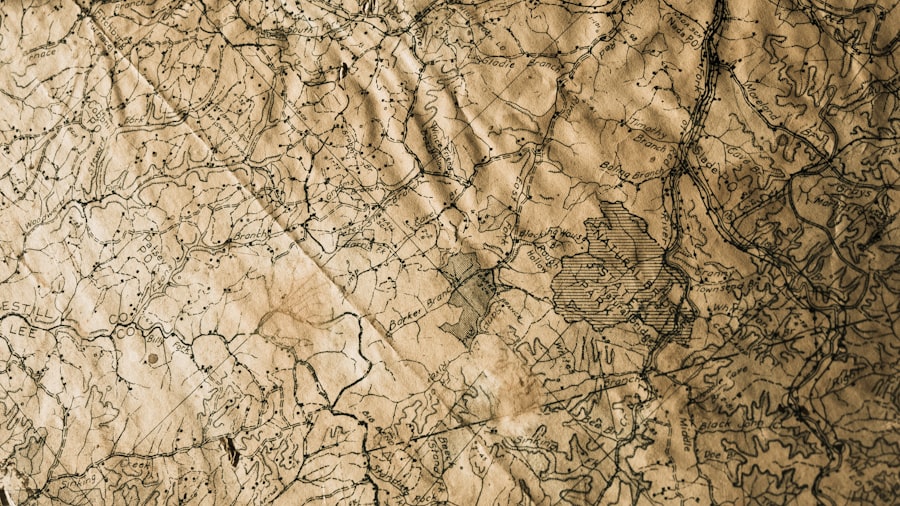Tanzania, located in East Africa, is endowed with a wealth of natural resources that play a pivotal role in its economy and the livelihoods of its people. The country boasts a diverse array of landscapes, from the majestic peaks of Mount Kilimanjaro to the expansive plains of the Serengeti, which are not only visually stunning but also rich in biodiversity. The natural resources of Tanzania can be broadly categorised into minerals, forests, agriculture, water, energy, and wildlife.
Each of these categories contributes significantly to the nation’s economic framework and cultural heritage. The abundance of natural resources in Tanzania presents both opportunities and challenges. While these resources have the potential to drive economic growth and development, they also require careful management to ensure sustainability.
The interplay between resource extraction, environmental conservation, and community needs is complex. As Tanzania continues to develop, the balance between utilising these resources for economic gain and preserving them for future generations remains a critical issue.
Summary
- Tanzania is rich in natural resources, including minerals, forests, agriculture, water, energy, and wildlife.
- The country has significant mineral resources such as gold, diamonds, and gemstones, making it a key player in the global mining industry.
- Tanzania’s forest resources are under threat due to deforestation, illegal logging, and unsustainable land use practices.
- Agriculture is a major contributor to Tanzania’s economy, with a focus on crops such as maize, rice, and coffee, as well as livestock farming.
- Tanzania’s water resources are crucial for agriculture, energy production, and human consumption, but they are facing challenges such as pollution and over-extraction.
Mineral Resources in Tanzania
Tanzania is rich in mineral resources, which include gold, diamonds, tanzanite, and various industrial minerals. Gold mining is particularly significant; Tanzania is one of Africa’s largest gold producers, with major mines located in regions such as Geita and Mara. The country’s gold production has seen substantial growth over the years, contributing significantly to national revenue and foreign exchange earnings.
In 2020 alone, gold exports accounted for approximately 90% of Tanzania’s total mineral exports, underscoring its importance to the economy. In addition to gold, Tanzania is renowned for its unique gemstone, tanzanite, which is found exclusively in the Mererani Hills near Arusha. This striking blue-violet stone has gained international acclaim and is highly sought after in global markets.
The mining sector also includes the extraction of diamonds, with significant deposits located in the Williamson Diamond Mine in the Shinyanga region. However, the mining industry faces challenges such as illegal mining activities and environmental degradation, necessitating stricter regulations and sustainable practices to protect both the environment and local communities.
Forest Resources in Tanzania

Tanzania’s forests cover approximately 38% of the country’s land area and are vital for both ecological balance and economic development. The forests are home to a rich diversity of flora and fauna, including several endemic species. They provide essential ecosystem services such as carbon sequestration, soil conservation, and water regulation.
Additionally, forests are a source of timber, non-timber forest products (NTFPs), and fuelwood for local communities. The management of forest resources in Tanzania is crucial for sustainable development. The government has implemented various policies aimed at promoting sustainable forest management practices.
Community-based forest management initiatives have been introduced to empower local communities to manage their forest resources effectively. These initiatives not only help conserve biodiversity but also provide economic benefits through sustainable harvesting practices. However, deforestation remains a pressing issue due to agricultural expansion, logging, and infrastructure development, highlighting the need for ongoing conservation efforts.
Agricultural Resources in Tanzania
Agriculture is a cornerstone of Tanzania’s economy, employing over 65% of the population and contributing significantly to GDP. The country has a diverse agricultural landscape that supports the cultivation of various crops such as coffee, tea, tobacco, cashew nuts, and maize. Coffee production is particularly noteworthy; Tanzania is known for its high-quality Arabica coffee grown in the northern highlands around Kilimanjaro and Arusha.
The agricultural sector faces numerous challenges including climate change, land degradation, and inadequate access to modern farming techniques. Smallholder farmers often struggle with low productivity due to reliance on traditional farming methods and limited access to markets. However, initiatives aimed at improving agricultural practices through training and access to technology are being implemented to enhance productivity and food security.
The government and various NGOs are working together to promote sustainable agricultural practices that not only increase yields but also protect the environment.
Water Resources in Tanzania
Water resources are vital for sustaining life and supporting economic activities in Tanzania. The country is endowed with numerous lakes, rivers, and wetlands that provide water for domestic use, agriculture, and industry. Lake Victoria, one of the largest freshwater lakes in the world, is shared by Tanzania, Uganda, and Kenya and plays a crucial role in the livelihoods of millions of people who depend on its fisheries and water supply.
Despite the abundance of water resources, Tanzania faces significant challenges related to water management. Access to clean drinking water remains a pressing issue in many rural areas where infrastructure is lacking. Additionally, pollution from agricultural runoff and industrial activities poses a threat to water quality.
The government has recognised the importance of sustainable water management practices and has initiated various programmes aimed at improving water supply systems and promoting conservation efforts to protect this vital resource.
Energy Resources in Tanzania

Tanzania’s energy resources are diverse but largely underutilised. The country relies heavily on biomass for energy consumption, particularly in rural areas where wood fuel is the primary source for cooking and heating. However, this reliance on biomass has led to deforestation and environmental degradation.
To address these challenges, there is a growing emphasis on diversifying energy sources. Tanzania has significant potential for renewable energy generation, particularly from solar, wind, hydroelectricity, and natural gas. The government has made strides in harnessing these resources; for instance, several solar energy projects have been initiated to provide electricity to off-grid communities.
Additionally, natural gas reserves discovered off the coast have opened up opportunities for cleaner energy production. However, investment in infrastructure and technology remains crucial to fully exploit these energy resources while ensuring environmental sustainability.
Wildlife and Biodiversity in Tanzania
Tanzania is renowned for its rich wildlife and biodiversity, making it one of Africa’s premier ecotourism destinations. The country is home to iconic species such as elephants, lions, giraffes, and rhinoceroses, as well as a plethora of bird species that attract ornithologists from around the globe. National parks like Serengeti and Ngorongoro Crater are UNESCO World Heritage Sites that showcase the country’s commitment to wildlife conservation.
The preservation of wildlife is not only vital for ecological balance but also serves as a significant source of revenue through tourism. Ecotourism contributes substantially to local economies by providing jobs and supporting community development initiatives.
Conservation efforts are being implemented through community engagement strategies that promote coexistence between humans and wildlife while ensuring that local communities benefit from conservation initiatives.
Challenges and Conservation of Tanzania’s Natural Resources
Despite its wealth of natural resources, Tanzania faces numerous challenges that threaten their sustainability. Rapid population growth has led to increased demand for land and resources, resulting in deforestation, soil degradation, and overexploitation of minerals and wildlife. Climate change further exacerbates these issues by altering weather patterns and impacting agricultural productivity.
Conservation efforts are critical to addressing these challenges. The Tanzanian government has established various protected areas and national parks aimed at preserving biodiversity and natural habitats.
These initiatives not only promote sustainable practices but also empower communities by providing them with economic incentives tied to conservation efforts. International cooperation plays a vital role in supporting Tanzania’s conservation goals. Partnerships with NGOs and global organisations help fund conservation projects and raise awareness about the importance of protecting natural resources.
As Tanzania navigates the complexities of resource management amidst development pressures, a holistic approach that integrates environmental sustainability with economic growth will be essential for ensuring that its natural treasures endure for generations to come.
FAQs
What are the main natural resources of Tanzania?
Tanzania’s main natural resources include minerals such as gold, diamonds, tanzanite, coal, and iron. It also has significant deposits of natural gas and a variety of agricultural resources such as coffee, tea, and cashew nuts.
Where are the mineral resources located in Tanzania?
The mineral resources in Tanzania are located in various regions across the country. For example, gold is found in areas such as the Lake Victoria Goldfields, while tanzanite is mainly found in the Mererani Hills in the Manyara Region. Coal and iron deposits are located in the southwest of the country.
Where are the natural gas resources located in Tanzania?
Tanzania’s natural gas resources are primarily located in the coastal region, particularly in the southern part of the country. The most significant natural gas discoveries have been made in offshore fields in the Indian Ocean.
Which regions in Tanzania are known for their agricultural resources?
Tanzania’s agricultural resources are spread across various regions, with the main areas of production being the Southern Highlands, the Lake Zone, and the coastal areas. The Southern Highlands are known for their production of coffee and tea, while the Lake Zone is a major producer of cashew nuts.
How does Tanzania benefit from its natural resources?
Tanzania benefits from its natural resources through revenue generation, employment opportunities, and foreign exchange earnings. The extraction and export of minerals, natural gas, and agricultural products contribute significantly to the country’s economy.


